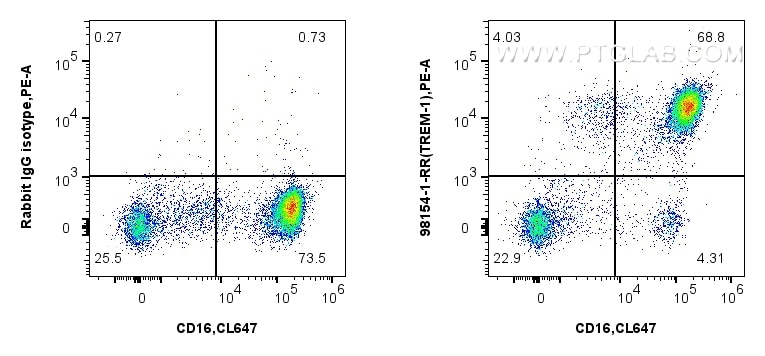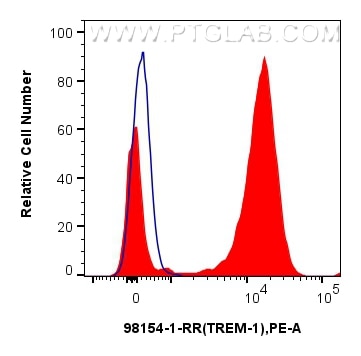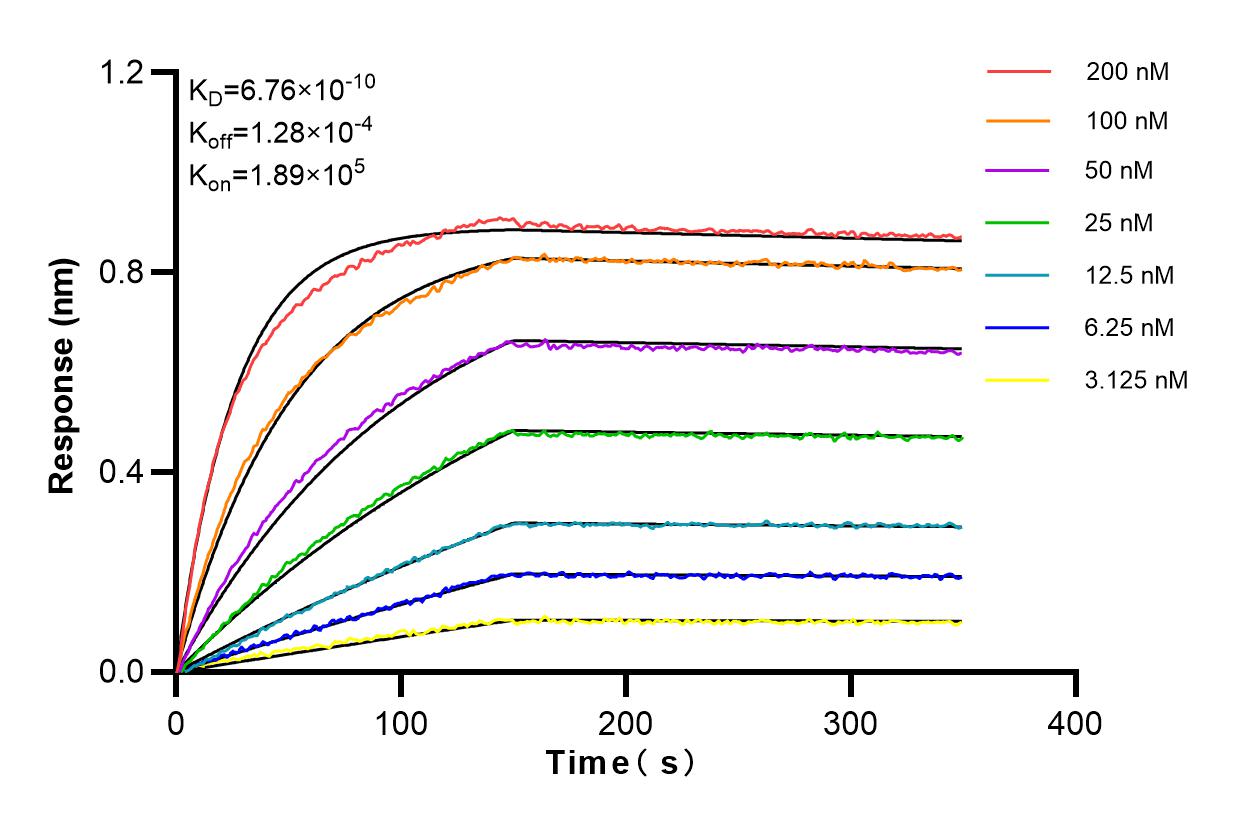Tested Applications
| Positive FC detected in | human peripheral blood leukocytes |
Recommended dilution
| Application | Dilution |
|---|---|
| This reagent has been tested for flow cytometric analysis. It is recommended that this reagent should be titrated in each testing system to obtain optimal results. | |
| Sample-dependent, Check data in validation data gallery. | |
Product Information
98154-1-RR targets TREM-1/CD354 in FC applications and shows reactivity with human samples.
| Tested Reactivity | human |
| Host / Isotype | Rabbit / IgG |
| Class | Recombinant |
| Type | Antibody |
| Immunogen | Fusion Protein Predict reactive species |
| Full Name | triggering receptor expressed on myeloid cells 1 |
| Calculated Molecular Weight | 26kDa |
| GenBank Accession Number | NM_018643.5 |
| Gene Symbol | TREM1 |
| Gene ID (NCBI) | 54210 |
| RRID | AB_3672297 |
| Conjugate | Unconjugated |
| Form | Liquid |
| Purification Method | Protein A purfication |
| UNIPROT ID | Q9NP99-1 |
| Storage Buffer | PBS with 0.09% sodium azide , pH 7.3 |
| Storage Conditions | Store at 2 - 8°C. Stable for one year after shipment. |
Background Information
Triggering receptor expressed on myeloid cells 1 (TREM-1, also known as CD354) is a member of the immunoglobulin superfamily, which is expressed on neutrophils and monocytes. TREM1 plays a role in the innate immune system. TREM1 amplifies neutrophil and monocyte-mediated inflammatory responses triggered by bacterial and fungal infections by stimulating release of pro-inflammatory chemokines and cytokines, as well as increased surface expression of cell activation markers.
Protocols
| Product Specific Protocols | |
|---|---|
| FC protocol for TREM-1/CD354 antibody 98154-1-RR | Download protocol |
| Standard Protocols | |
|---|---|
| Click here to view our Standard Protocols |







